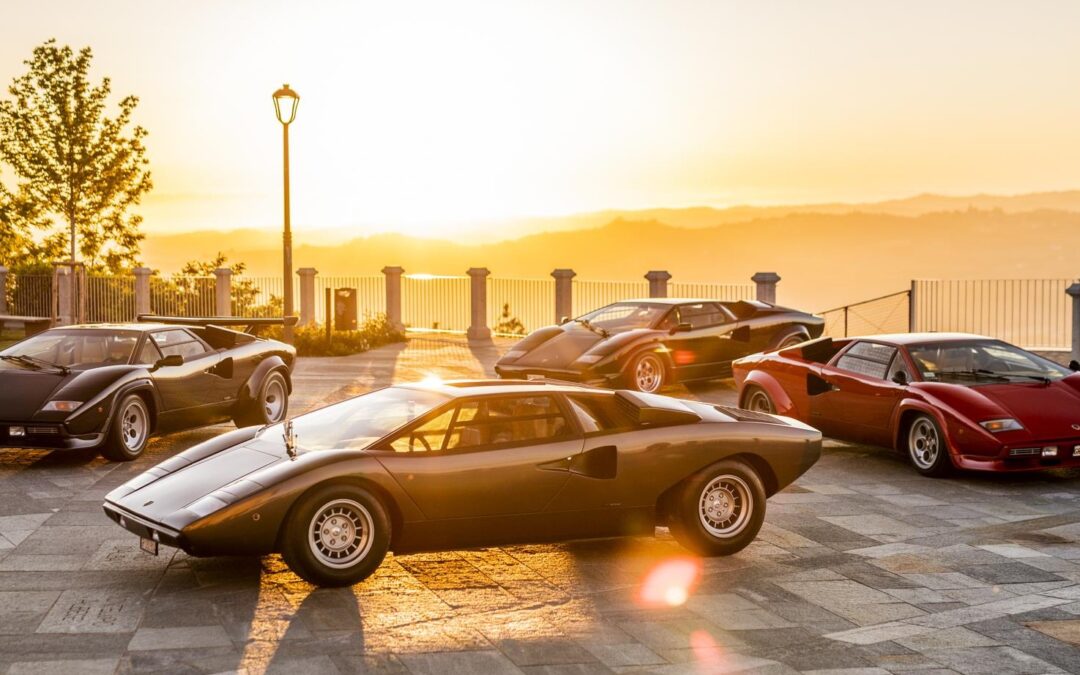Automaker celebrates the 50th anniversary of the Lamborghini Countach in a series of four social-media videos
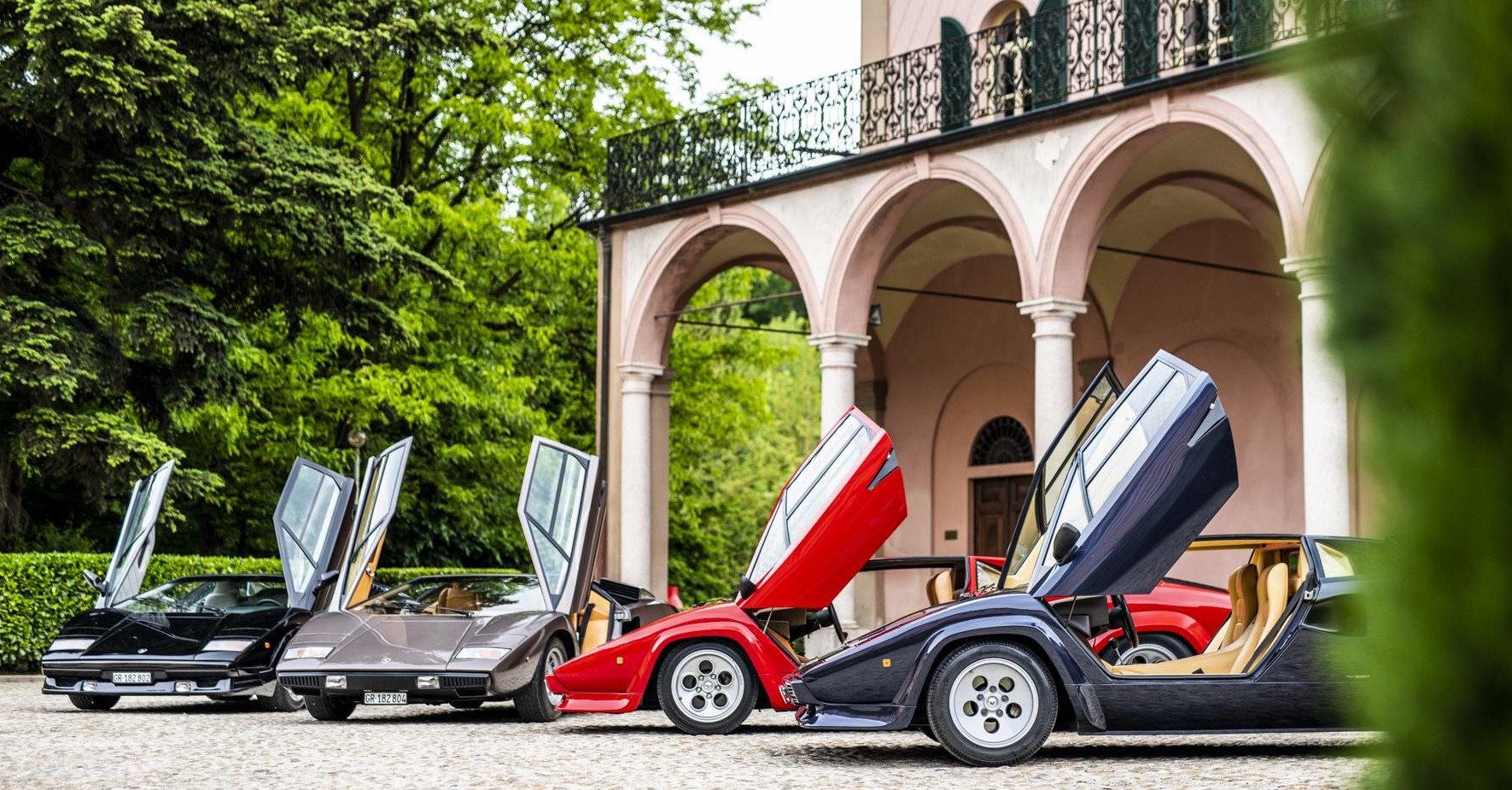 Five generations of the Lamborghini Countach. (Remi Dargegen)
Five generations of the Lamborghini Countach. (Remi Dargegen)
To celebrate the 50th anniversary of the Lamborghini Countach supercar, Automobili Lamborghini is launching a series of four videos on its social media channels. Every Monday, the Italian carmaker will recount the legacy of the Lamborghini Countach, including interviews with significant personalities who shaped the car.
The first is Marcello Gandini, head of style at Carrozzeria Bertone. He sketched the futuristic lines of this supercar and added its now-iconic scissor doors.
The 1970s was one of ultimate creativity, Gandini says, and one of the important moments for design.
It was an era of individualism, the jet age, and the space race. And it embraced the geometric patterns of the period and the bright colors of fashion trends.

(Remi Dargegen)
Lamborghini Countach as style and performance icon
The Countach depicted much more than a commercial success. Images and posters of the supercar were on bedroom walls of an entire generation. The supercar also played a starring role in dozens of films.
The Lamborghini Countach fulfilled the role of style and performance icon. As a result, it rightfully won the title in the annals of world automotive history, Lamborghini says.
The Countach had a total production of 1,999 cars (not including the first LP 400 prototype).
Since the beginning of production, the Countach was exported to the U.S. But it was not until 1986, and the debut of the LP 5000 Quattrovalvole, that the Countach was officially approved for North America.
The word “Countach” is an exclamation of the Italian Piedmontese dialect that translates to astonishment and admiration for something.
1971: Countach LP 500 ‘idea car’

Lamborghini Countach LP 500. (Lamborghini)
In the summer of 1970, Ferruccio Lamborghini wanted a revolutionary car to succeed the Lamborghini Miura. The new car had to be technically advanced and faster. And it had to become the sports car symbolizing the 1970s.
The 12-cylinder engine remained but with a displacement increase from 4.0 to 5.0 liters. The engine also was repositioned from rear transverse to rear longitudinal. The five-speed synchromesh manual transmission was placed in front of the engine and practically abutted the seats.
1973: First-gen Lamborghini Countach LP 400
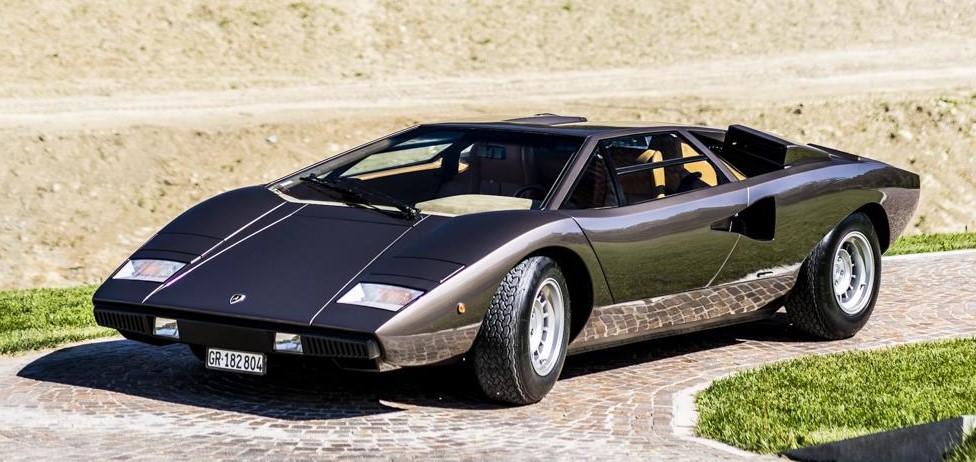
Countach LP 400. (Remi Dargegen)
Early road tests of the 5.0-liter engine uncovered problems that would take more time to sort. So a quick fix was for the engineers to instead use the 4.0-liter engine.
The Countach LP 400 made its official debut at the Geneva Motor Show in March 1973. It was chassis No. 1120001 car. LP 400 was a prototype very similar to what would become the production car.
The LP 400 adopted a tubular trellis frame instead and aluminum was used for the body, not steel panels.
 Countach LP 400. (Remi Dargegen)
Countach LP 400. (Remi Dargegen)
The 4.0-liter (3929cc) engine used six Weber 45 DCOE twin-body carburetors. The engine developed 375 horsepower at 8,000 rpm and could reach a top speed or 186 mph or 300 kmh.
A red LP 400 was shown at the Geneva Motor Show. It was later repainted medium green for the 1973 motor shows in Frankfurt, Paris, and Earls Court, London.
The show car was sold to a buyer in Switzerland after the show and rediscovered in the early 2000s. Today LP 400 is owned by Automobili Lamborghini. It is now on display at the company museum, the MUDETEC.
The Countach LP 400 is the most sought-after version by collectors, Lamborghini says, with 152 units produced until 1977.
1978: Lamborghini Countach LP 400 S
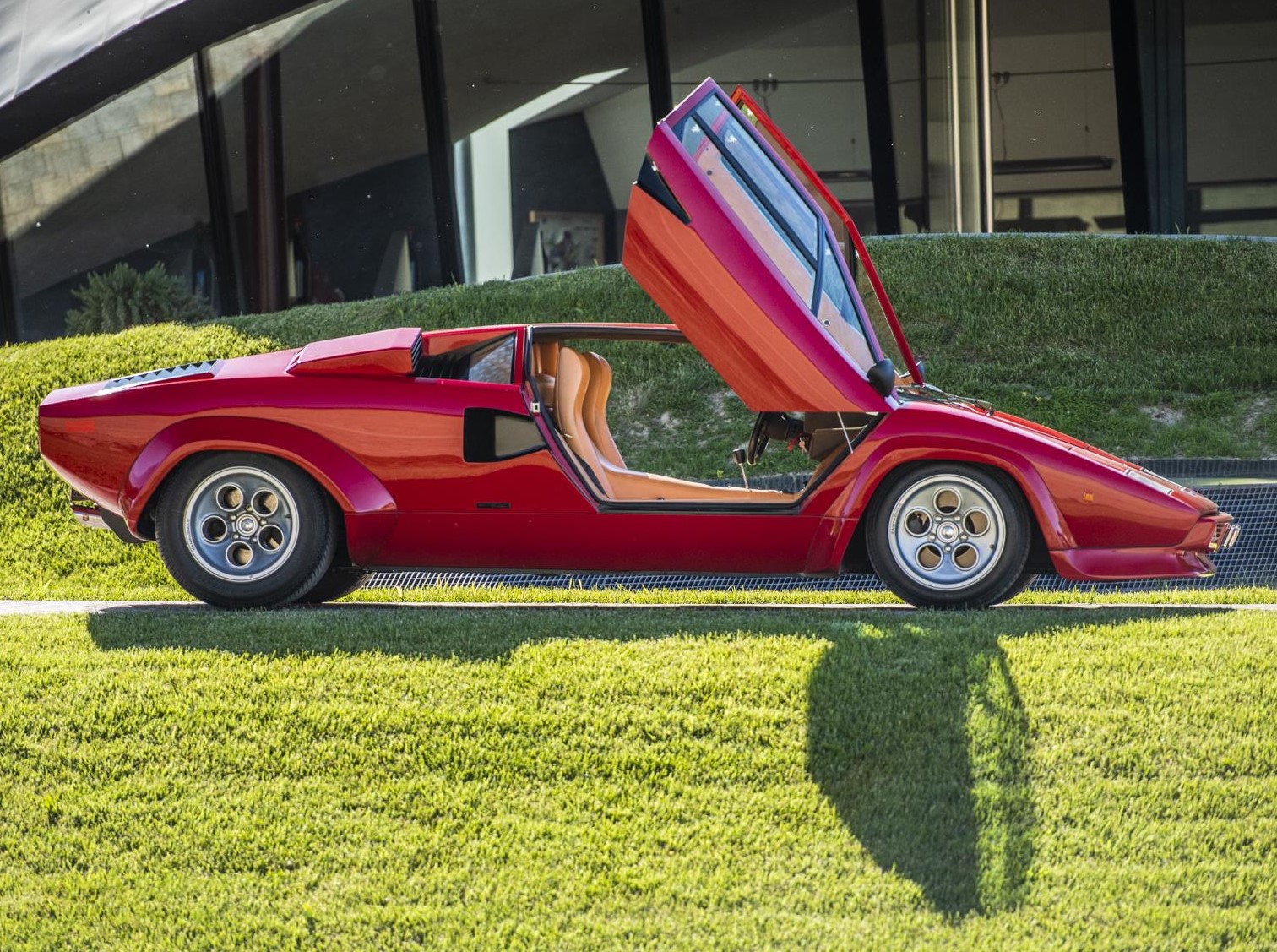
Countach LP 400 S. (Remi Dargegen)
The LP 400 was replaced in 1978 by the Countach LP 400 S.
It sported lower profile and wider Pirelli P7 tires. The staggered-width tires mounted on magnesium rims had sizes of 205/50 VR 15 on the front and 345/35 VR on the rear. Wheel-arch extensions were added to contain the larger tires.

The 375-hp, 4.0-liter V-12 engine in the Countach LP 400 S. (Remi Dargegen)
Other updates include an optional ultra-low front spoiler and a rear wing. The wing would become one of the most distinctive features of the Countach.
Never before had a “normal” car with such a racing appearance been seen on the road, Lamborghini says. It was the source of inspiration for each of the subsequent Countach series. Production of the LP 400 S totaled 235 units.
1982: Lamborghini Countach LP 5000 S

Countach LP 5000 S. (Remi Dargegen)
The 1982 Lamborghini Countach had an engine upgrade to a 5.0-liter V-12. The new LP 5000 S debuted at the Geneva Motor Show in March 1982.
The new engine developed 375 hp at 7,000 rpm, and it retained the six Weber horizontal twin-body carburetors. After import to the U.S., some cars were retrofitted with the Bosch K-Jetronic electronic injection.
With 323 cars produced, this model was replaced by the LP 5000 Quattrovalvole. It debuted at the Geneva Motor Show in March 1985.
1985: Lamborghini Countach LP 5000 Quattrovalvole

Countach LP 5000 Quattrovalvole. (Remi Dargegen)
The technical evolution of the 5.0-liter V-12 added four valves per cylinder. The Quattrovalvole (QV) engine displacement increased to 5.2 liters and the six Weber carburetors were mounted vertically, not in the horizontal position.
Cars for the U.S. market were fitted with Bosch KE-Jetronic electronic injection and a catalytic converter. As a result, horsepower rose to 455 hp at 7,000 rpm.
Aesthetic alterations were few but included a new engine hood with a more prominent bulge to contain the vertical carburetors.
There were 631 Quattrovalvole models produced until 1988.
1988: Lamborghini Countach 25th Anniversary
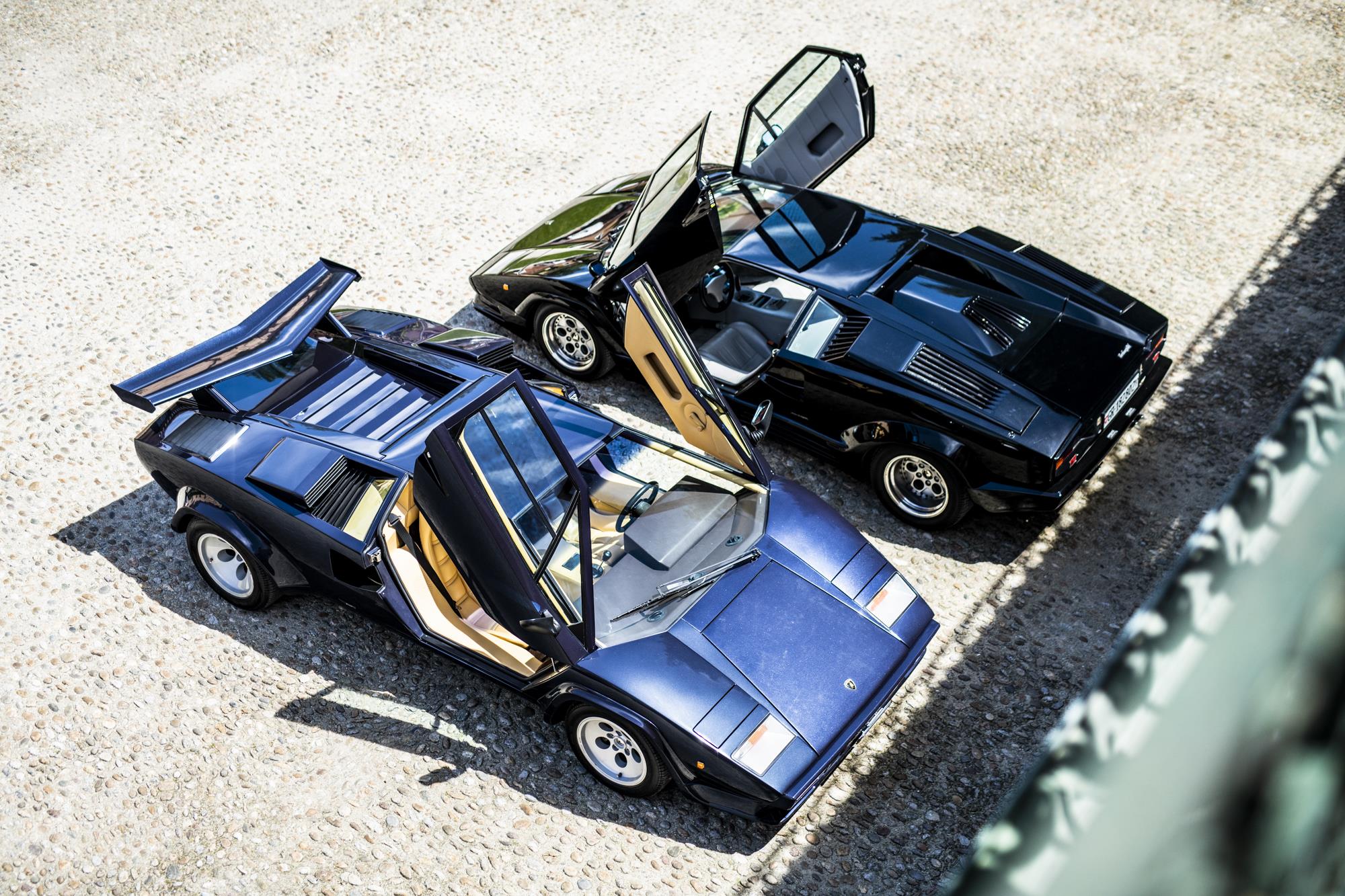
Countach 5000 S (left) and Countach 25th Anniversary (right). (Remi Dargegen)
The Lamborghini Countach 25th Anniversary was the final evolution of the model. It debuted at the Paris Motor Show in September 1988.
The aesthetic updates were significant, but changes to the mechanics and chassis were minor. An improved cooling system updated the engine, and the chassis was modified to accommodate the new Pirelli P Zero tires.

Countach interior. (Remi Dargegen)
The passenger compartment was updated with power windows and more comfortable power seats with less bolstering. In addition, the body style was decisively revised by young Horacio Pagani, who was working for Lamborghini at the time. He rounded the shapes and better integrated the wheel-arch extensions and the plates under the doors.

Countach 25th Anniversary, (Remi Dargegen)
The last Countach, a 25th Anniversary, was produced on July 4, 1990, with European specification. Its exterior was Argento Metallizzato (metallic silver) with a gray leather interior. It has not been sold and is still on display at the MUDETEC.

